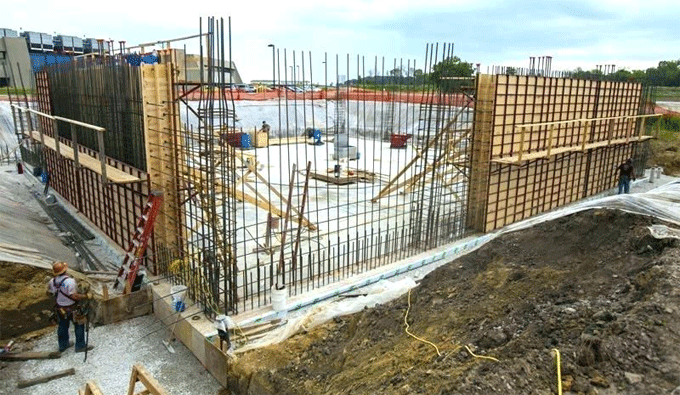
Detail construction method for concrete walls
While developing any building, construction of concrete walls is considered as a crucial phase. It is built up as a load bearing structure to transmit the loads from floor to the wall under or to the foundation, other than allocate spaces in multi-storey buildings. Besides, concrete wall is very effective in the areas where earthquake may occur as it offers satisfying performance throughout earthquakes.
So, the protection of the building is significantly dependent on the concrete walls. Proper precautions should be taken at the time of constructing the walls. Besides, the quality of the materials should be good for building up the concrete wall to enhance the performance of the wall all through its life cycle.
Types of materials in concrete wall construction:
Several types of materials are utilized for erecting the concrete walls. These materials should comply with valid codes and specifications like requirements of ACI 318-14.
1. Cements (various types of cements are found and among them the portland cement is mostly recognized.
2. Aggregate
3. Sand
4. Admixtures
5. Steel Reinforcement
6. Formwork materials (wood, steel, aluminum, plastic, a composite of cement and foam insulation, or composite of cement and wood chips).
Equipments applied in concrete wall construction:
1. Concrete Mixing and Delivery machinery
2. Concrete compaction and finishing equipment
3. Safety accessories for workers
The following steps are involved in constructing the concrete wall :-
1. Reinforcement Placement
2. Formwork of Concrete Wall
3. Construction Joints in Concrete Walls
4. Concrete Production
5. Pouring Concrete
6. Removal of Formworks
7. Curing Concrete Wall
1. Reinforcement Placement: Normally, if wall thickness is lesser than 100 mm, then reinforcement bars should be placed in one layer. Although, reinforcement bars should be arranged in two layer when the wall thickness is larger than 200 mm.
Steel bars are set horizontally and vertically in the wall in a grid pattern as per the design drawings. Approved steel bar size, spacing, and concrete cover should be arranged with highest possible accuracy. Reinforcement bars are positioned on the tension side of the wall. Once the reinforcement is fully set then formwork fixing operation will commence.
At construction joints, steel bars should be expanded for ceaseless resistance. Besides, it connects with the rebar on the other side, overlapping for a certain distance. Same overlap should be arranged for reinforcement bar ends and steel bar that bends a corner.
2. Formwork of Concrete Wall
a. As soon as the reinforcements are set up, then the formwork should be fixed for the concrete wall.
b. Various types of formworks can be applied for wall construction like wood, aluminum, and plastic formworks.
c. At the time of choosing the formwork system, the quality of constructed wall should be taken into consideration.
d. Normally, wood formworks are set up onsite.
e. Pre-fabricated formwork systems are also suitable for the construction of concrete walls.
f. These formwork systems fabricated from wood containing a metal frame or totally from metal, are formed to connect with each other via a system of pins or latches.
g. There are wide array of sizes and shapes of prefabricated fromwork sections, and sometimes custom sizes are created for particular projects.
h. The formwork should be sufficiently strong to withstand the pressure of fresh concrete, and there should be sufficient concrete cover.
To learn other steps, go through the following article theconstructor.org


